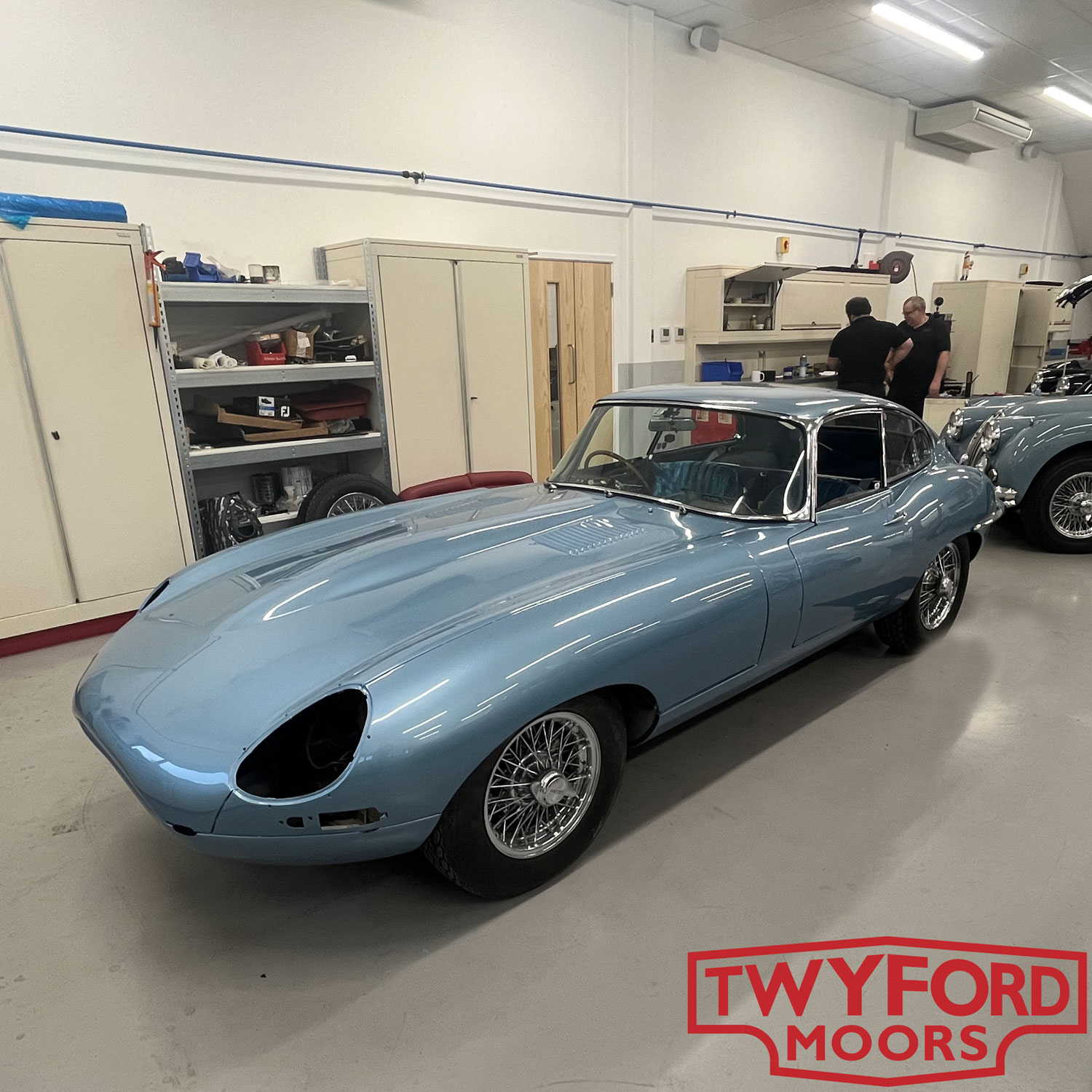Suspension, Servicing, and Shows – Workshop Update
It has been a busy few weeks with the classic car calendar in full swing. We have been at many events and preparing cars for even more. Over the past month, we have hosted a club open afternoon, been up to London for the Sir Stirling Moss Memorial Service at Westminster Abbey, and attended the Jaguar Enthusiasts’ Club's first track day of the year. To read about any of these events, please pop over to the news section of our website.
We are now looking forward to more events over the summer season. In particular, we are looking forward to the Mike Hawthorn Memorial track day at Goodwood. There are only a few spaces left, so please do get in touch if you wish to take part. The event is also open to spectators, who we encourage to attend in their classic cars. Spectators are also welcome to book in for lunch in the Jackie Stewart Pavilion. Again, please head to the news section of our website for more information.
In this week's update, we have everything from vintage radios to new floors being welded in.
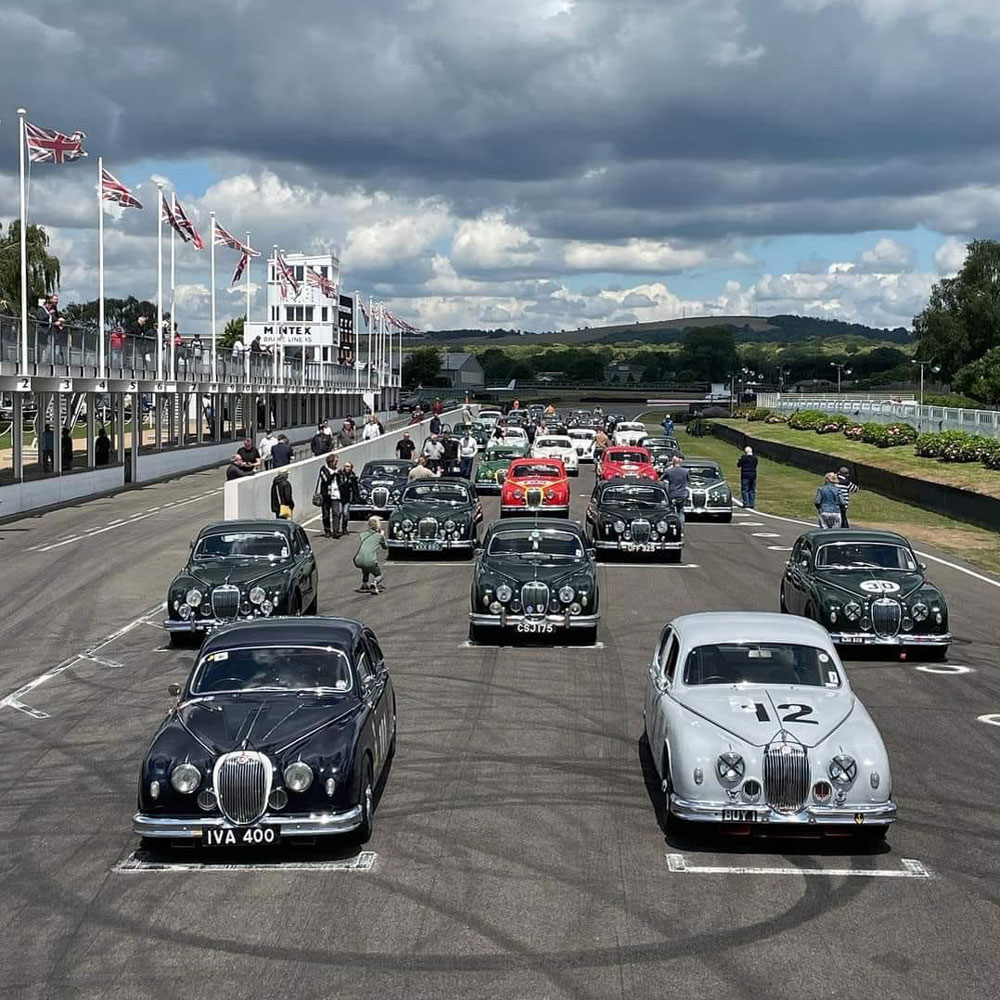
Jaguar XK150 OTS
Often overlooked in the XK150 range is the OTS, or roadster. The roadster isn’t quite as practical or refined as the drophead coupe; however, with the hood down, the roadster is a hugely attractive car. It is no surprise that they are and were far more popular and sought after in the US and Europe than here in the UK. As a result of the lack of demand in the home market, only 93 right-hand drive XK150 OTS models were built, making them incredibly rare.
What’s really interesting about them, though, is that although they lack some of the practicality of the drophead coupe with its padded hood and quarter lights, they are far more practical than they are given credit for. Many people will think of a roadster and imagine a similar arrangement to that of the XK120 or XK140 OTS with side screens and that slightly closed-in feeling when the wet weather gear is fitted. Jaguar had in fact massively improved the XK150 OTS compared to its predecessors by adding winding windows and improving the way the hood seals to the windscreen. This, combined with the wrap-around screen, makes for a much more comfortable and practical driving experience in all weathers.
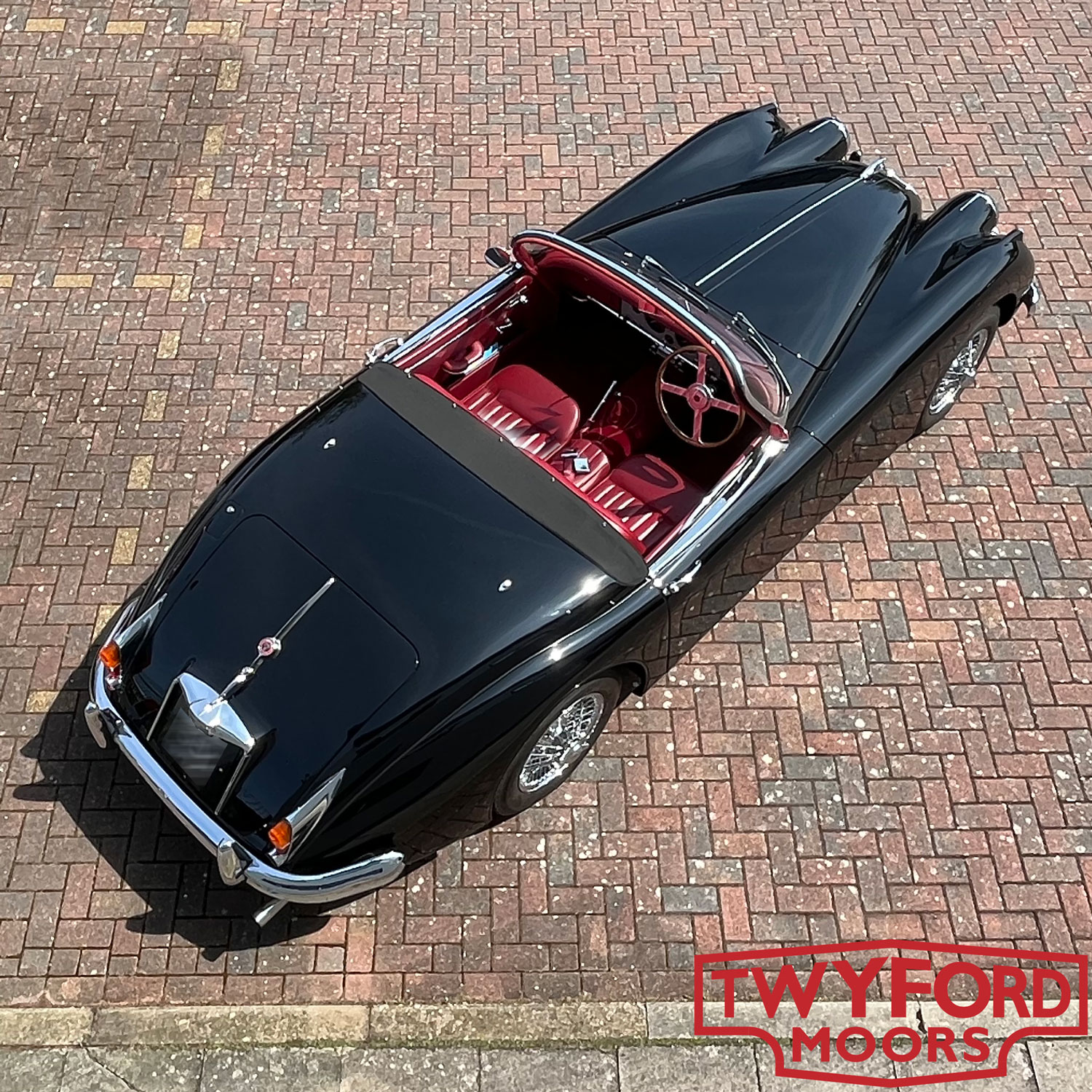
Jaguar XK140 Period Radio
We are in love with this His Master's Voice period radio, which we have just fitted to this XK140 drophead coupe. It just looks perfect set against the walnut dashboard, chrome bezels, and black gauges. We offer a range of solutions for audio systems in XKs, ranging from radios hidden behind the original drawer front which we make open on a hinge, amplifiers with Bluetooth receivers hidden in the footwell, or modern digital radios with a retro look. This, though, has to be the best-looking solution.
This radio has been upgraded with a modern stereo amplifier and can power four speakers, giving modern quality sound in a vintage package. It has also been adapted to receive FM radio and connect to your mobile phone via an aux cable, USB cable, or Bluetooth. It even allows for hands-free calling.
As with so many things in life, there is a compromise. When one packs so much clever technology into a vintage and original-looking radio, you have to make use of the original buttons, dials, and displays to control it. One has to read the manual carefully to learn the different combinations of button presses and knob twisting to get through the various menus. The lack of a digital display means you are relying on audible messages to know you are doing the right thing. It is by no means a deal breaker, and once you have it all set up and know what you’re doing, all you really need is to turn the volume up and down and switch between radio and mobile phone.
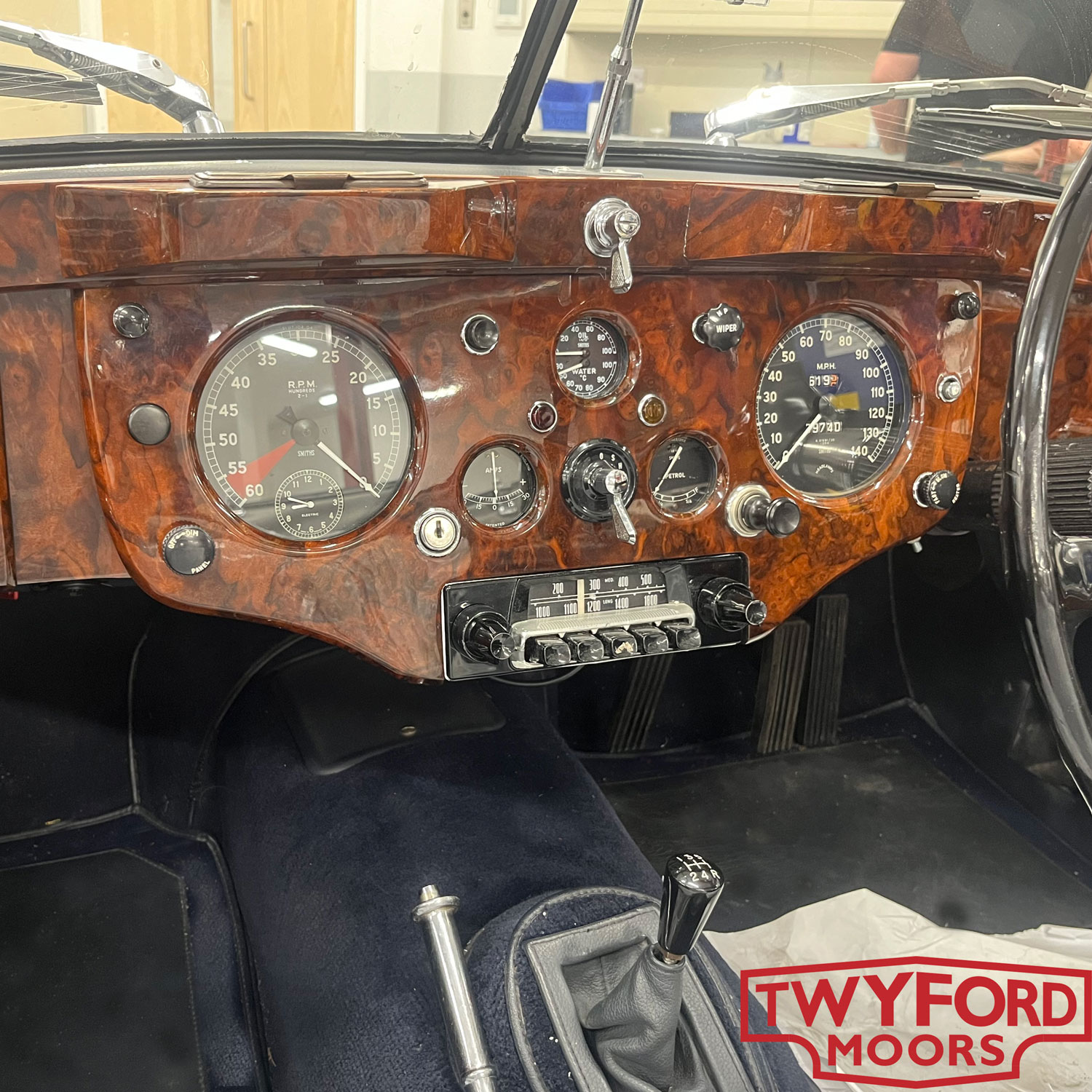
Daimler V8 Electrics
This lovely Daimler V8 came to us through an insurer. The car had suffered a bad short circuit behind the dashboard, damaging much of the wiring and some of the switches and gauges. We are well-versed in working with insurance companies to get classic cars repaired properly and back on the road as quickly as possible. It is important to insure your car with a company that understands classic cars and that they need specialist attention to get right.
We assessed the damage to this Daimler and found that the short had run back from the light switch, damaging the front wiring harness. This meant that only the front harness and other affected components needed replacing. Fortunately, unlike XKs, we can get the front wiring harness separately, although there was an eight-week wait for this to be manufactured. It is worth noting here that supply chain delays are something we are experiencing more and more. We try to keep as many parts as we can in stock to minimise the effect of this on our customers.
With the new parts here, we were swiftly able to replace the damaged components and get this Daimler back up and running.
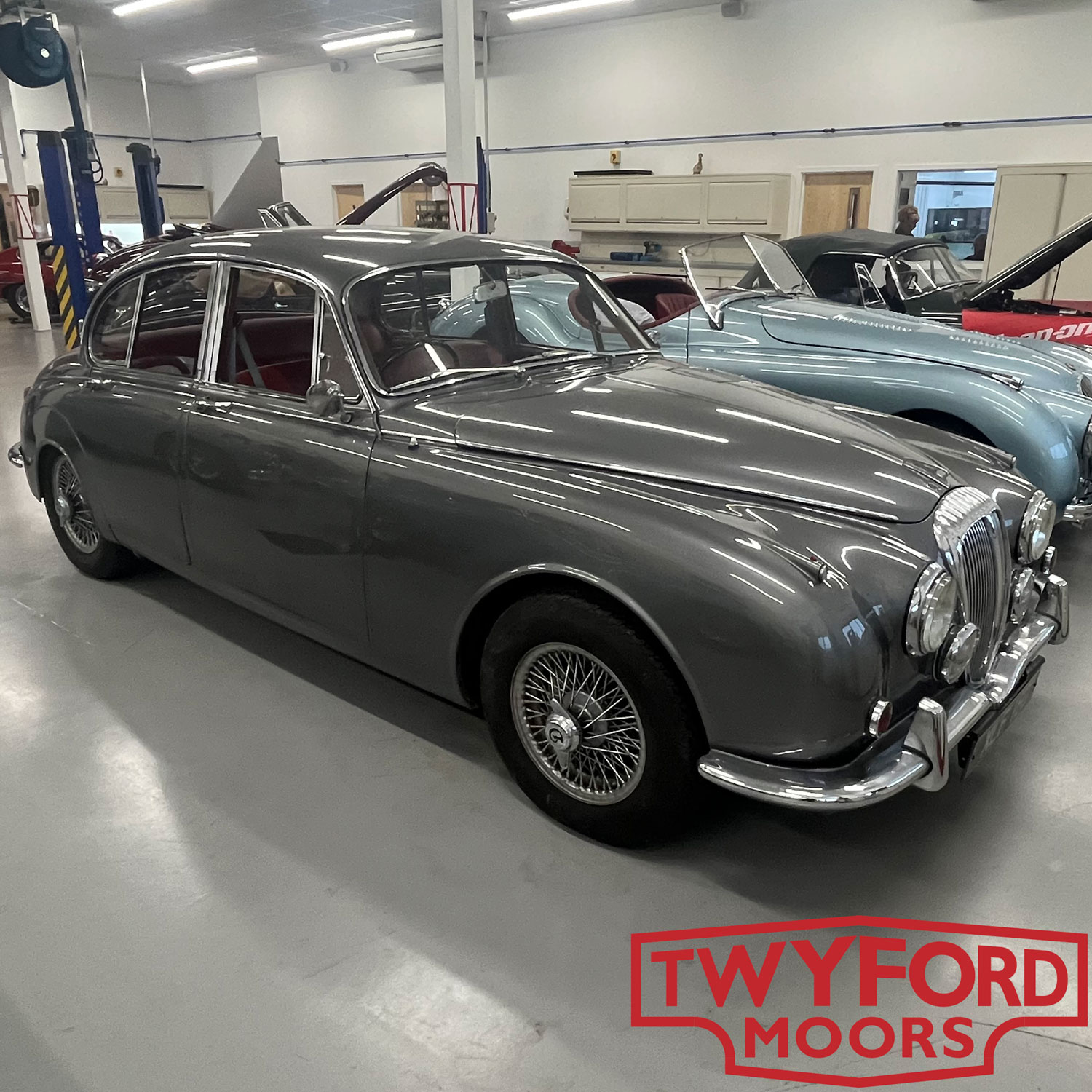
Jaguar XK120 Restoration
We have shared the progress of this XK120 OTS restoration many times over the past months. It is now coming towards the end of the restoration process, and the finishing touches are being made. A lot of work goes into checking every aspect of a restoration towards the end to get them into tip-top shape. That being said, it must be remembered that these are hand-built cars, designed over 70 years ago, restored and refurbished using largely original components. As such, there will always be a shakedown period where we have to adjust, tighten, and generally tweak the car to get it right.
The car has just come back from being trimmed. Prior to this, we got the car running and driving so we could check everything was working well prior to trimming. Usually, when a car is finished in this stunning metallic blue colour, you will see them with a blue, grey, or duo blue and grey interior. This always looks very nice. The owner of this car took the bold decision to trim it in red. When this was specified, I don’t mind admitting I was unsure of how it would look. The finished result is great, though. The interior really pops and gives a bold contrast against the blue.
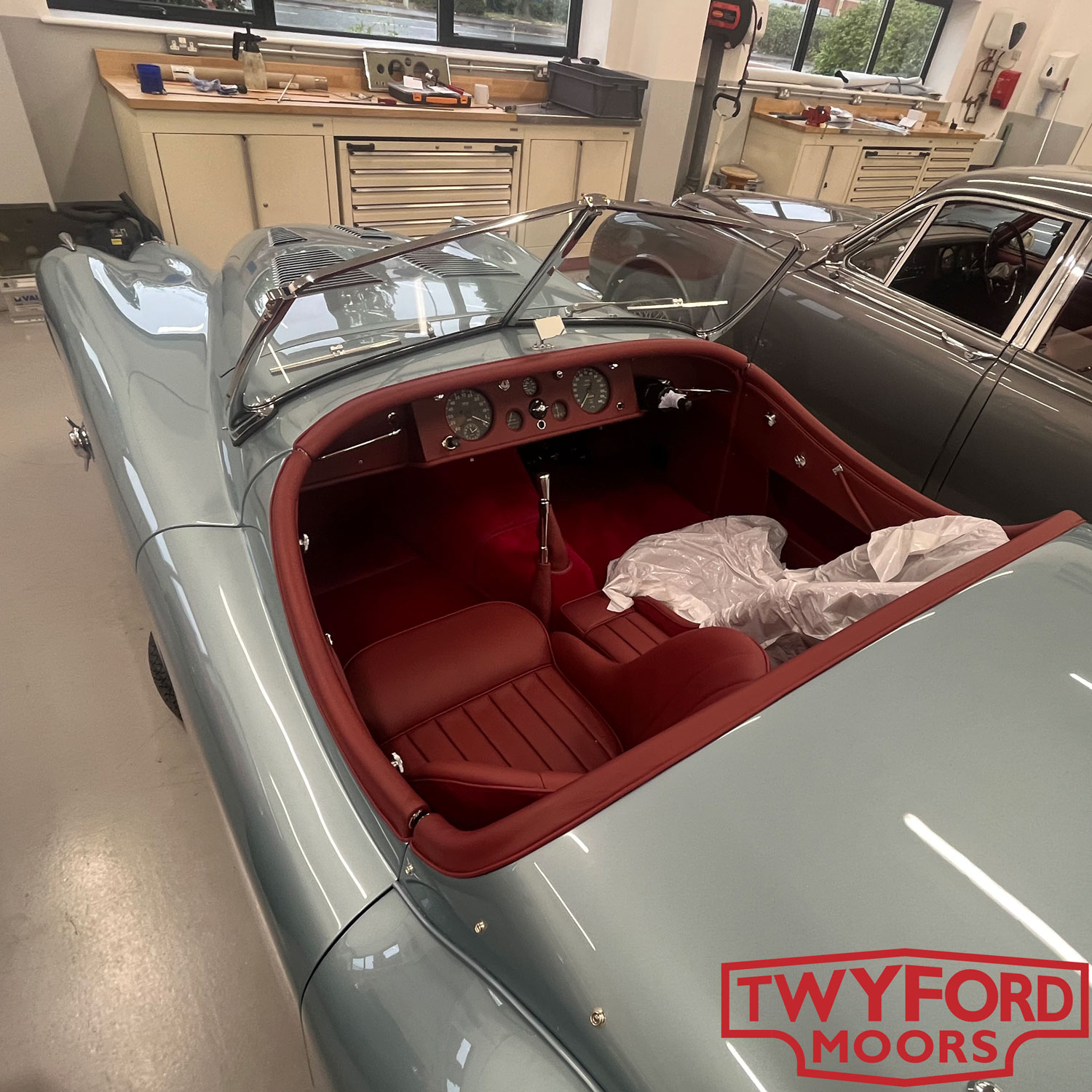
Jaguar XK Cylinder Head Rebuild
This cylinder head has been fully rebuilt and is destined to be fitted to a 4.2-litre fast road engine we are currently building. The engine in question will be fitted to a modified MKII saloon along with a five-speed gearbox and a few other choice upgrades. We are able to offer a full range of rebuild services in our clean room, ranging from carburettor to rear differential rebuilds and everything in between. Our increased capacity in this area also allows us to offer these services, not just to our in-house projects, but to those working on their cars at home. We have recently completed a number of E-Type carburettor and inlet manifold rebuilds. This seems to be particularly popular at the moment due to the effect modern fuels can have on older components.
As can be seen from the photos, this cylinder head has been cleaned inside and out in our dip tank before machining. It has had new, larger valves fitted along with brand new camshafts designed to provide higher performance without compromising the smooth running of the car. You can also see in the photo the upgraded bucket which we fit to our engines.
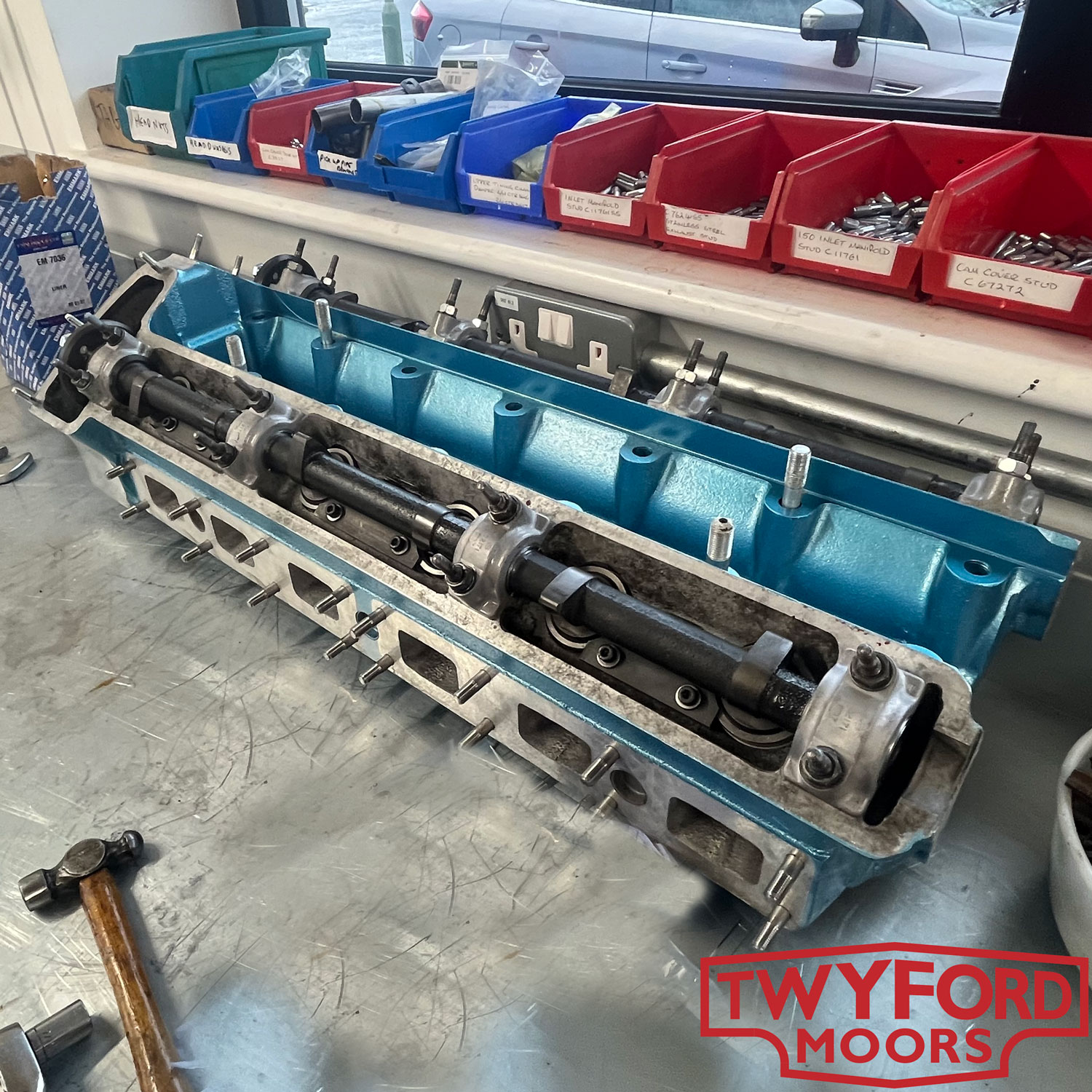
Jaguar XK150 3.8 S DHC
The Jaguar XK150 3.8 S is the ultimate expression of the XK range. The "S" specification XK150 came with what Jaguar called a "straight port cylinder head"; although the ports aren't actually straight, they are straighter and wider than the standard head, allowing for better airflow. To keep pace with this increased potential for air/fuel flow, triple 2-inch SU carburettors were added. According to Jaguar, this upped the power to 250bhp.
By 1958, the power race was truly on, especially in America, so to compete with large-capacity American V8s, Jaguar introduced a new 3.8-litre version of their straight-six. In standard form, the new 3.8 was claimed to produce 220bhp, and in the "S" specification, the power was reported to be 265bhp. The 3.8 litre, triple carburettor version of the XK engine went on to power the E-Type, and we all know what a success that was.
These S cars are very rare and sought after. The car pictured here is an original right-hand drive 3.8 S drophead coupe, making it one of fewer than 50 cars to have been built. Amazingly, we currently have 3 of those 50 cars on site.
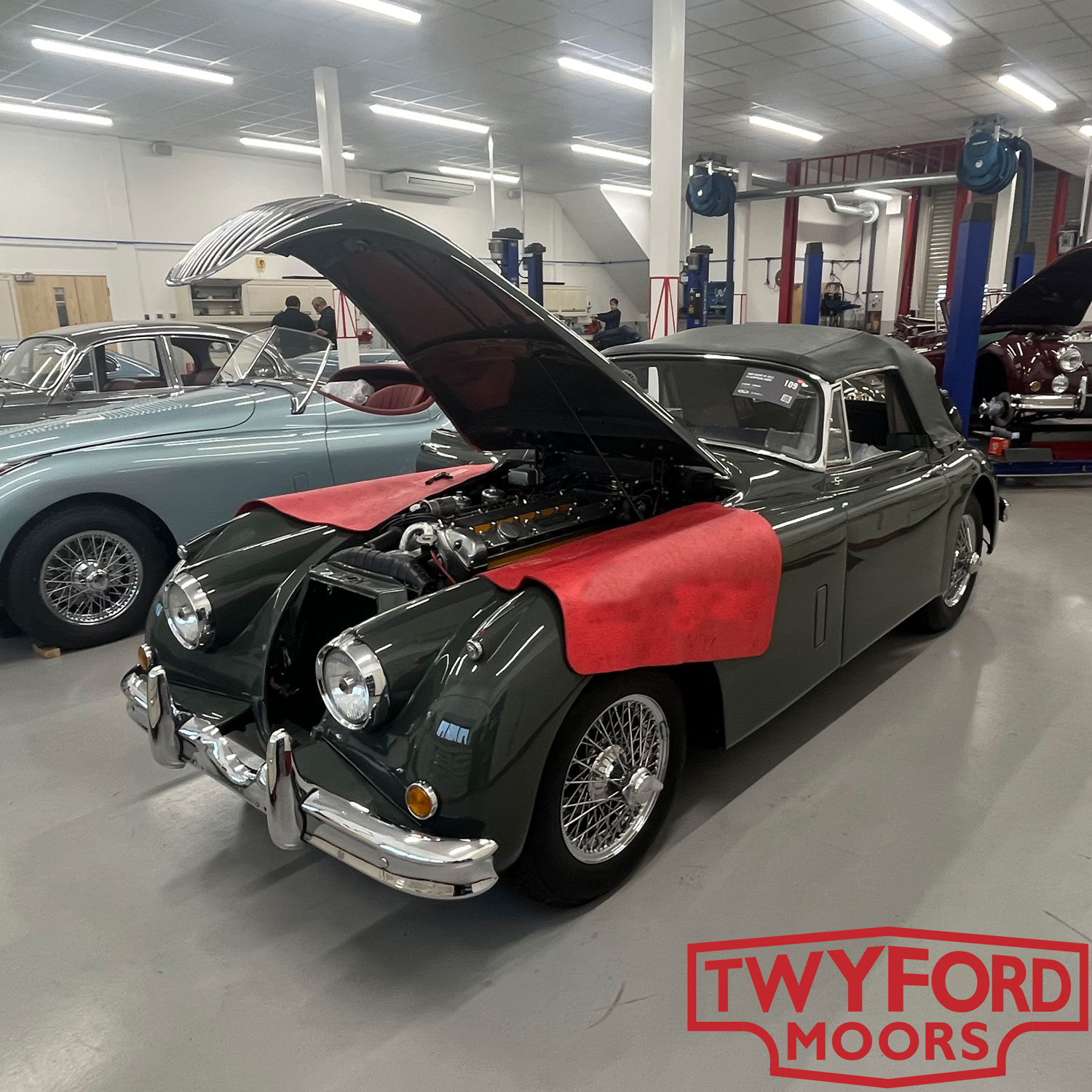
Jaguar E-Type Restoration
We shared a photo of this Jaguar E-Type bodyshell a month or so ago when it had come back from being dipped and taken back to bare metal. We had a very enthusiastic response to this, and many people have asked us to share more as we make progress with this project. With the car stripped back to a bare shell, we were able to properly assess its condition and come up with a plan of action. We have now obtained the panels required to repair the car properly and can set about the task. This process will be time-consuming as we are finding old repair on top of old repair.
Pictured here, you can see that the old passenger side floor has been cut out and the new floor and cross member are being tacked into place. Real care has to be taken to get everything aligned properly and to ensure that all the poor historic repairs, as well as corroded material, are removed. It will be a long road getting this E-Type back into top condition, but it will be a wonderful car once it is done.
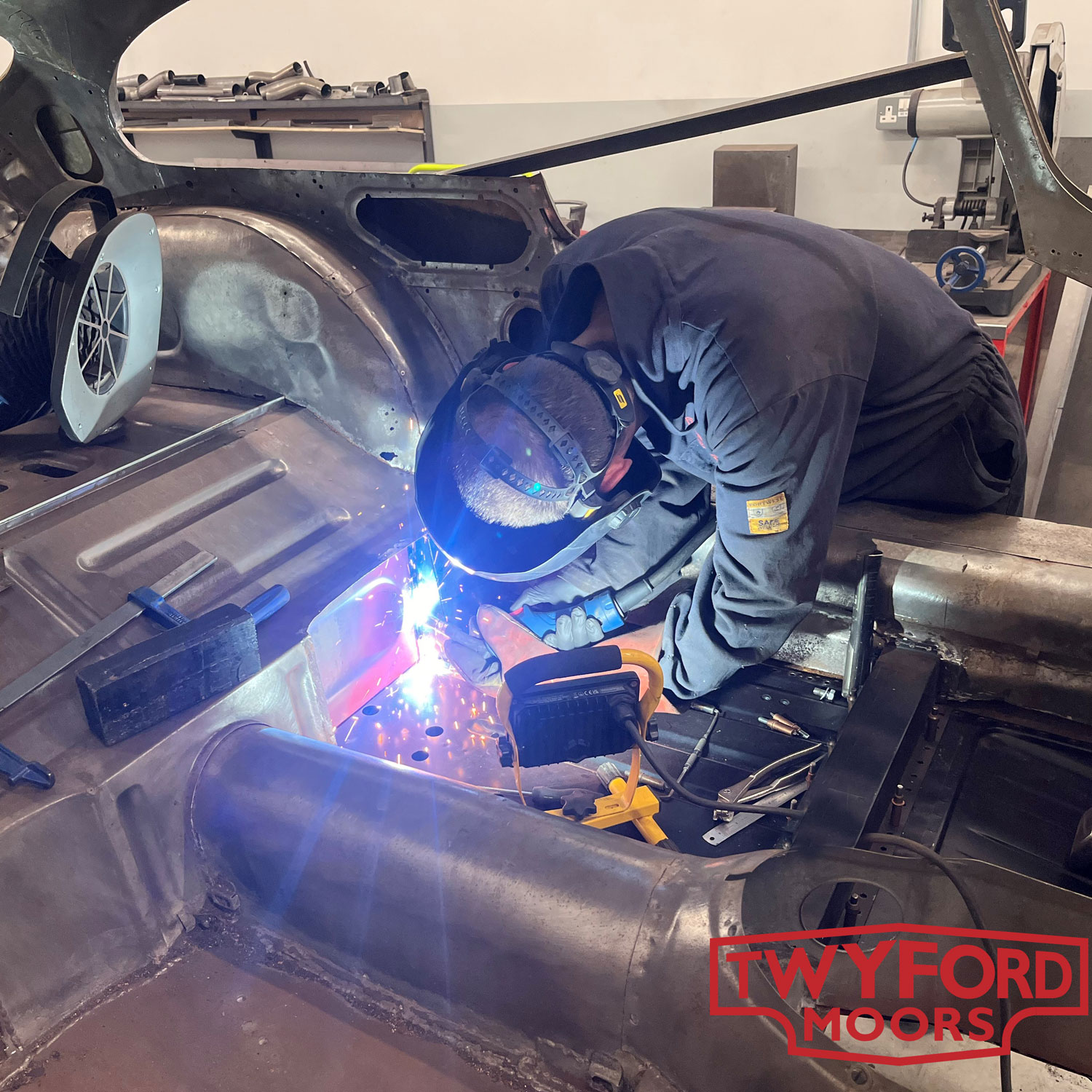
Jaguar E-Type and MKII Heading Out
These two beautiful classic Jaguars were parked out front waiting to be collected. We felt it was too nice a photo opportunity to miss.
The E-Type is a Series 3 or V12 E-Type. It had been in with us to have a new stainless steel exhaust system fitted. These exhaust systems are beautifully crafted to release the full potential of the V12 engine. The exhaust note is pleasingly sporty without being excessively loud. They also allow you to fit catalytic converters to reduce the emissions from your classic car. These exhaust systems are also available for earlier E-Types and XKs.
The MKII was in for a service and pre-tour preparation. We are looking after an increasing number of these sporty Jaguar saloons. When well-maintained, they are fantastic cars to drive. They do, however, suffer badly if they aren’t regularly maintained. We often see worn suspension bushes or subframe mounts, which ruin the handling. The damage to these is often caused by oil leaks from the engine contaminating the rubber components. It is not quick or easy replacing some of these parts, but it is well worth it to get the car driving as well as intended.

Worn and Perished Suspension Bushes
We talk a lot about worn and perished suspension bushes. We often share photos of the ‘after’ photos of rebuilt suspension with polyurethane suspension bushes fitted. We thought it was about time we shared a before photo. At this point, I feel it is worth mentioning, for the benefit of our friends across the pond, that when we say suspension bushes we are referring to what you would call ‘bushings’. We have had a lot of comments from our American cousins on recent posts utterly baffled by what we are talking about. I believe that George Bernard Shaw is credited with saying, “England and America are two countries separated by the same language.”
Anyway, back to worn suspension components. This slightly abstract photo shows the top wishbone on an XK140. The suspension bushes have split, and you can see they are hanging out from the suspension arms. You can also see that when this XK was restored, the suspension was shot blasted back to bare metal but then wasn’t painted before reassembly, so it has a lot of surface corrosion. We will be stripping the suspension down and rebuilding it with painted components and polyurethane bushes.
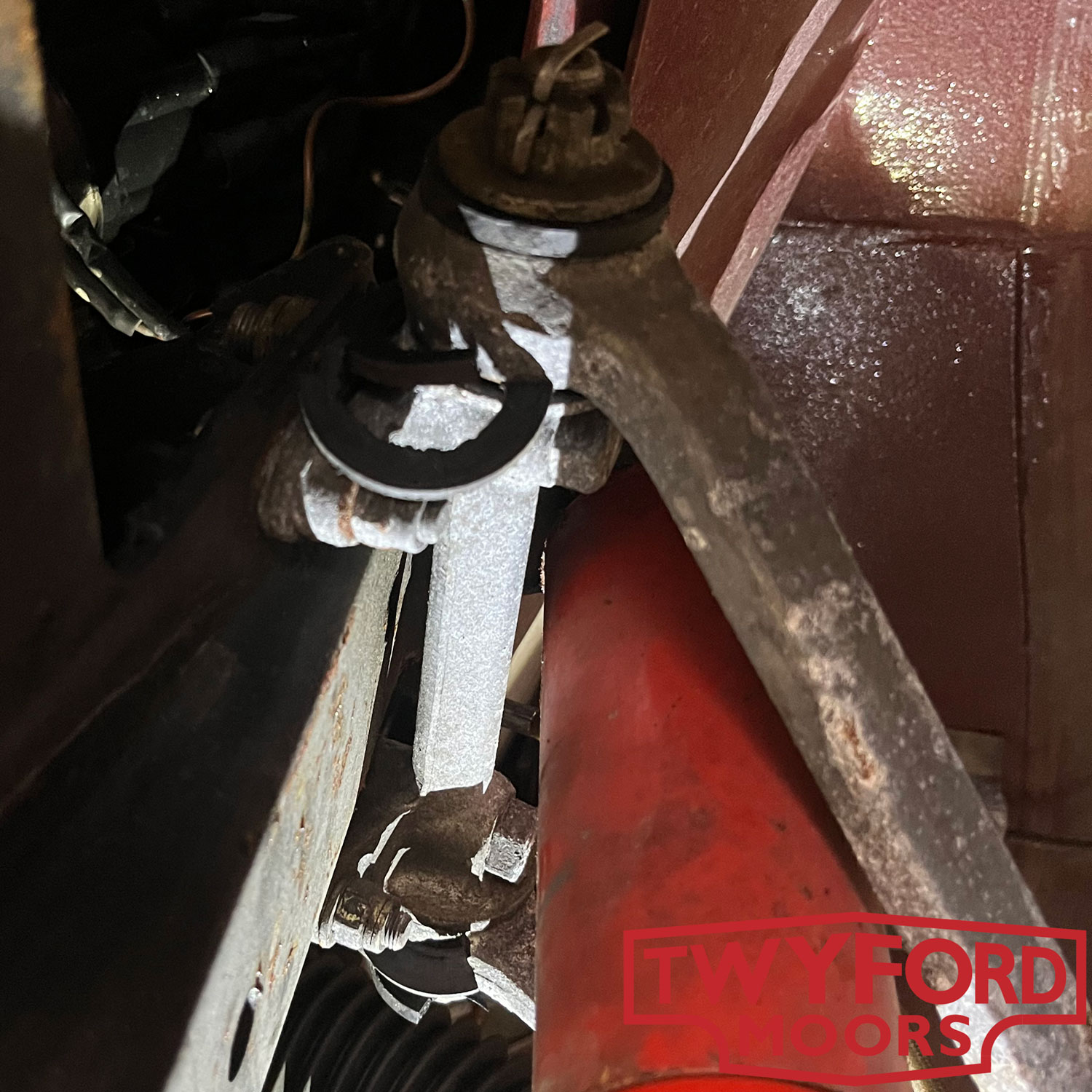
Jaguar E-Type Paintwork
We are just setting about refitting the chrome work to this Series 1 Jaguar E-Type after some paintwork. The car was solid and in very good order; however, the owner wasn’t totally happy with some of the panel gaps. The car also had a couple of panels where the paint match wasn’t quite right. This is a very tricky thing to get right, especially when panels are sprayed off the car, such as the bonnet or doors. Even the direction in which the panel is sprayed can make a difference to how it looks. Matching and blending new paint into old is also a very tricky art, so we usually recommend painting full panels to avoid unsightly blend marks in the paint.
With the car painted and looking very sharp indeed, we can now carefully set about refitting all the components which were removed for painting. We take the greatest care when removing and refitting parts to ensure they are not damaged and that we do not damage the paintwork. One of the trickiest jobs on an E-Type like this is removing and refitting the washer jets and the wiper linkage. Small hands and a lot of patience are required.
